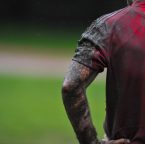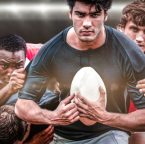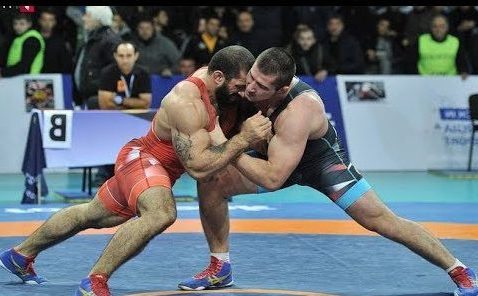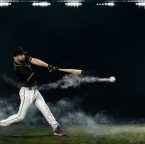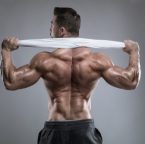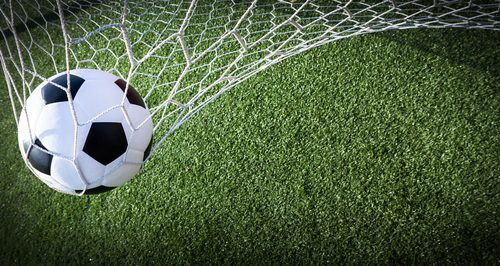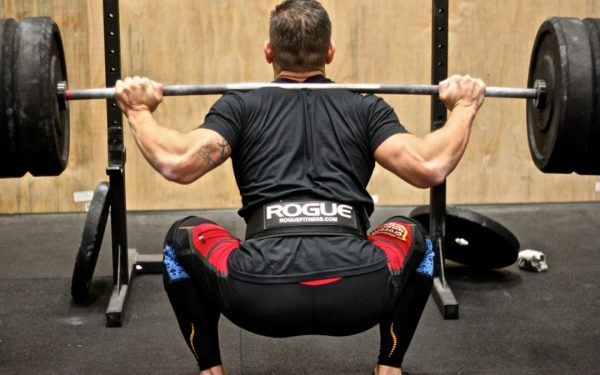Head and neck injuries are common in Rugby (1,3). There are three game situations that may lead to increased risk of head and neck injury – scrummaging, rucks, and tackling (1). These activities not only involve collisions, but often occur at high speed and include large, multi-directional forces.
The most common injuries to the head and neck are concussion and damage to the cervical structures, particularly to the ligaments and intervertebral discs (1). The ability to absorb shock and stabilise the cervical spine is crucial in preventing these injuries (1), as well as having potential performance benefits.
Historically, most neck injuries occurred during the scrum. Recent rule changes however, have seen a reduction of these injuries. Unfortunately, this has been accompanied by an increase in head and neck injuries resulting from tackle and ruck situations (1,5), demonstrating the need for all players to develop neck strength and power.
Related: Best Exercises Every Rugby Player Should Be Doing
In general, forwards have higher levels of neck strength and power than backs (2), with the Front Row having the highest levels of any position (1).
The unique positional requirements of Front Row forwards demand high levels of neck strength and power, which are developed over a number of years through specific training drills and when scrummaging in both practice and game situations (1).
The remaining forward positions are also exposed to these activities, but to a lesser extent and intensity, while backline players are generally exposed to these situations even less. This places the non-Front Row positions at a higher risk of head and neck injuries from open play (tackle and ruck situations) (1).
While specific drills and time spent scrummaging at training and in games is effective in developing neck strength and power, they must also be accompanied by a periodised strength program which involves specific neck exercises and targets both deep (including sternocleidomastoid, scalene muscles, longus colli, and longus capitus) and superficial (including the trapezii and rhomboids) muscles (4).
The deep neck muscles play the greatest role in preventing and controlling unwanted movement of the head and neck, with the Cross-Sectional Area (CSA) of these muscles being associated with higher levels of neck strength (4).
The superficial muscles are important in overall neck strength and provide protection for the neck area. As a result, the primary aims of a periodised program should be to increase the CSA and isometric strength of both the deep and superficial neck muscles, promote neck positional awareness and proprioception.
The following are suggested exercises that should be included in neck training programs for players. Due to reasons outlined above, care should be taken at all times to ensure that the neck remains in a safe position.
As a result, gliding of the neck in relation to the shoulders must be avoided. Rotation of the neck under load is a contraindication for most exercises and should only be performed during specific neck rotation exercises, once players have achieved a sufficient level of strength and development.
Exercise 1 | Isometric Hold Against Hand
Level = 1 | Sets = 2 | Reps = 1-5 each side | Time = 5-30 seconds
1. Place hand against head
2. Push against head with hand
3. Maintain starting neck position
4. Vary starting angle.
Exercise 2 | Isometric Theraband Holds
Level = 2 | Sets = 2 | Reps = 2-8 each side | Time = 3-10 seconds
1. Place Theraband around forehead
2. Retract chin, ensuring neutral neck position
3. Lean away from pole to create tension
4. Maintain neutral position under tension.
Exercise 3 | Isometric Theraband Holds with Front/ Lateral Raise
Level = 2 | Sets = 2 | Reps = 2-8 each side | Time = 3-10 seconds
1. As for #2
2. Perform front/lateral raise while maintaining neutral position
3. Use bodyweight, then DB’s.
Exercise 4 | Isometric Cable Machine Leans
Level = 2 | Sets = 2 | Reps = 2-8 each side | Time = Controlled
1. Place weight belt around forehead
2. Retract chin, ensuring neutral neck position
3. Lean away from pole to create tension
4. Maintain neutral position under tension
5. Move as whole body, not from neck.
Exercise 5 | Isometric Cable Machine Neck Walks
Level = 3 | Sets = 2-3 | Reps = 2-8 each side | Time = Controlled
1. As for #4
2. Take 1-2 steps out and back in desired direction
3. Control movement out and back.
Exercise 6 | Cable Machine Neck Rotation
Level = 3 | Sets = 2-3 | Reps = 2-8 | Time = Controlled
1. Place weight belt around forehead
2. Retract chin, ensuring neutral neck position
3. Step forward to create tension
4. Maintain neutral neck position, chin retracted
5. Rotate neck to Left/Right
6. Ensure neck rotates, rather than slides.
Exercise 7 | Advanced Cable Push/Pull
Level = 4 & 5 | Sets = 3 | Reps = 5-10 | Time = Controlled
1. As for #4
2. Transfer body weight in intended direction
3. Athlete should aim to push/pull the weight belt, rather
than just lean.
**Level 4/5 – Players at these levels may also need specific intervention based on anthropometric profile, position, identified weaknesses and injury history or risk.
This article is an excerpt from the Australian Rugby (ARU) Player Development curriculum, authored by our Pro coaches David Boyle and John Mitchell.
Click here to see David Boyle’s Rugby Union Training Programs.
Cameron West
Cameron is the Director of Pro Training Programs
References and Suggested Readings
1. Appleby, B.B. Andrews, W. Konrath, J. Isometric Cervical Strength in Rugby Union Players. NSCA Poster Presentation. 2011.
2. Olivier, P.E. Du Toit, D. E. Isokinetic neck strength profile of senior elite rugby union players. Journal of Science and Medicine in Sport. 11: 96-105. 2007.
3. Tsuyama, K. Yamamoto,Y. Fujimoto, H. Adachi, T. Nakazato, K. & Nakajima, H. Comparison of the isometric cervical extension strength and a cross-sectional area of neck extensor muscles in college wrestlers and judo athletes. European Journal of Applied Physiology. 84: 487-491. 2000. 5.
4. Tsuyama, K. Yamamoto, Y. Nakazato, K. Nakajima, H. The effect of neck muscle training on the isometric cervical extension strength and cross-sectional area of the neck extensor muscles-combined training for neck extensor muscles using a cervical extension machine. . Japanese Journal of Physical Fitness and Sports Medicine. 55: 1- 5. 2006.
5. Quarrie, K.L. Cantu, R.C. Chalmers D, J. Rugby Union Injuries to the Cervical Spine and Spinal Cord. Sports Medicine. 32: 633-653. 2002.

